
The nation’s monumental capital, named for its first president

Capital city of the United States, Washington is the only stateless city in the country, occupying most of the federal District of Columbia. A purpose-built capital city, Washington, D.C. was founded on the shores of the Potomac River in 1791, originally with a ten-by-ten mile boundary in a diamond shape straddling Maryland and Virginia. The land west of the Potomac was returned to Virginia following a referendum in 1846, giving rise to its asymmetric boundaries today. Washington, D.C. is governed directly by Congress.
For a long time, the United States was a country that I had visited extensively, but not been to its capital city. Other destinations I’ve visited but not yet seen the capital include Canada, Australia, South Africa and Turkey. This changed in 2018 when we visited as part of a combined trip to New York. Washington, D.C. far exceeded my expectations, after the crowds and noise of New York it was pleasant and peaceful, easy to walk around, with excellent museums, monuments and sights to see. It was however difficult to find reasonably-priced accommodation within walking distance of the National Mall – we stayed at Hotel Harrington which was two blocks from the Natural History Museum, but very much overpriced and underloved.
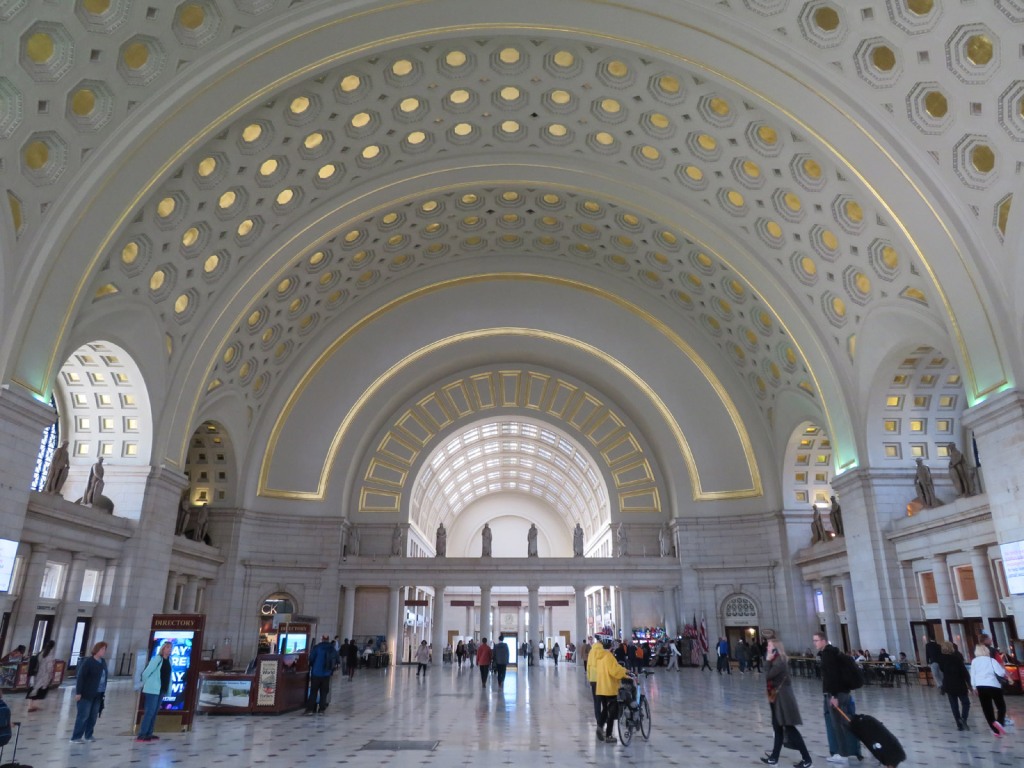
We arrived in D.C. by train from New York, at the surprisingly grand Washington Union Station, recently restored with massive barrel vaulted ceilings. From here it was an easy short trip on the subway to our hotel.
Official residence of the President, the White House is also the ultimate working-from-home location, with a convenient short commute on foot to the Oval Office in the West Wing.
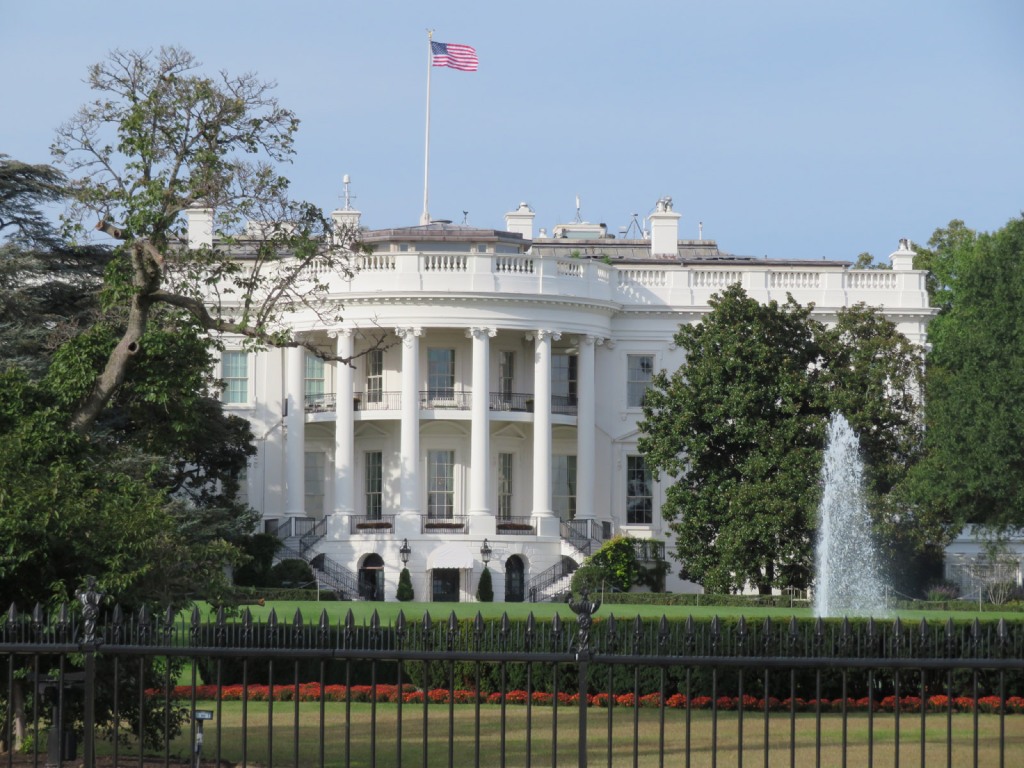

Things were less peaceful out front, with several long-term but small-scale protests, and secret service agents buzzing around. You could tell by the badge they wear that says “Secret Service”.
Close up of the Capitol Building, seat of the legislative branch of US government, i.e. the people that dream up the laws. A tremendous example of neo-classical architecture and easily one of the most wedding-cakey buildings I’ve seen, it has been imitated as far away as Cuba and Argentina.

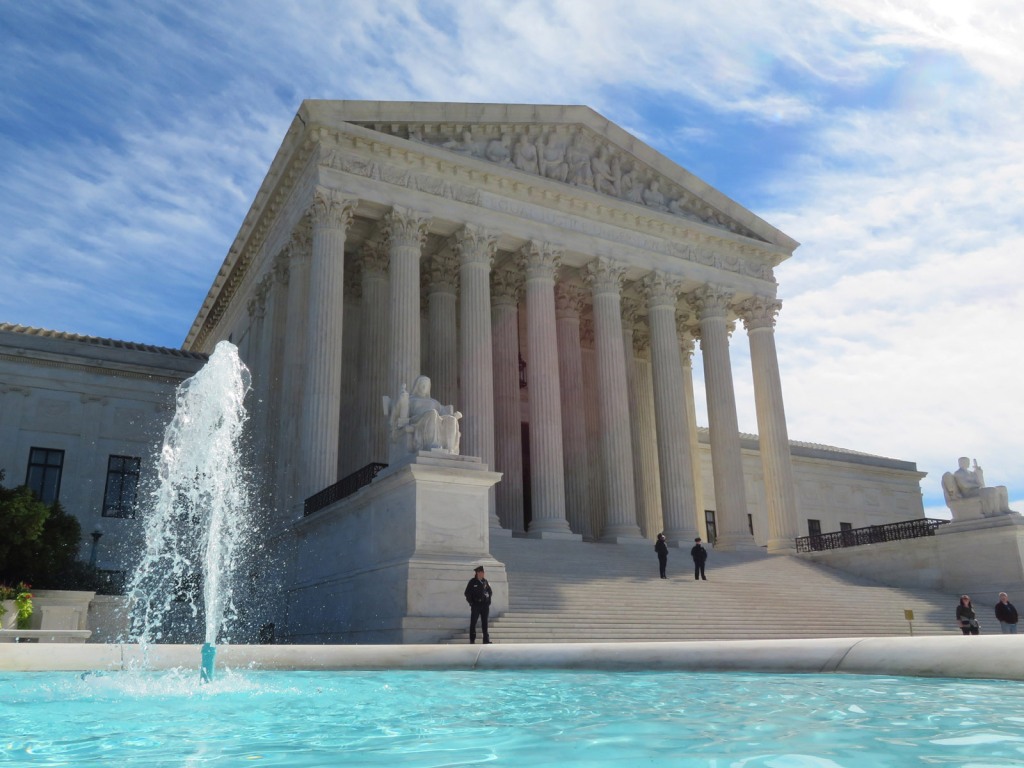
The Supreme Court is the judicial branch of government i.e. the people that enforce the laws and interpret the grey areas according to their political leaning. The fountain looks almost good enough to swim in, but according to the security guards, swimming is not encouraged.
Headquarters of the Federal Bureau of Investigation (the FBI), and named after its first director, President J. Edgar Hoover. An excellent example of brutalism with plenty of exposed raw concrete, the FBI objected to retail and dining outlets at street level during construction in the early 1970s, so the building hosts windowless black panels where fun was once designed.
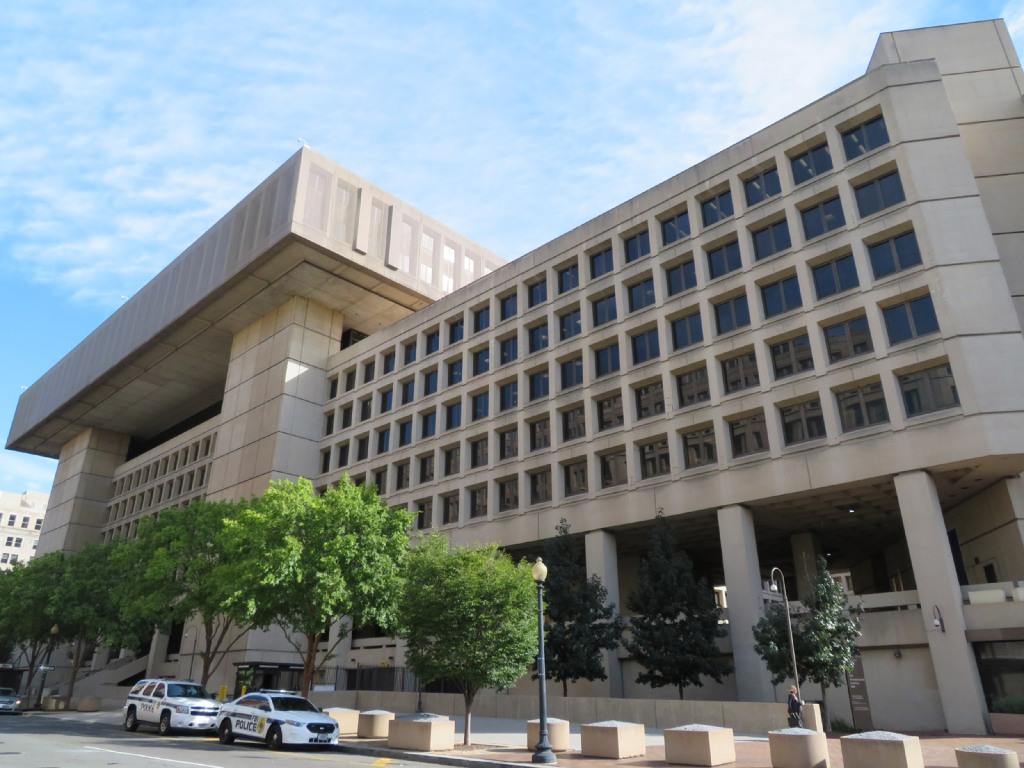
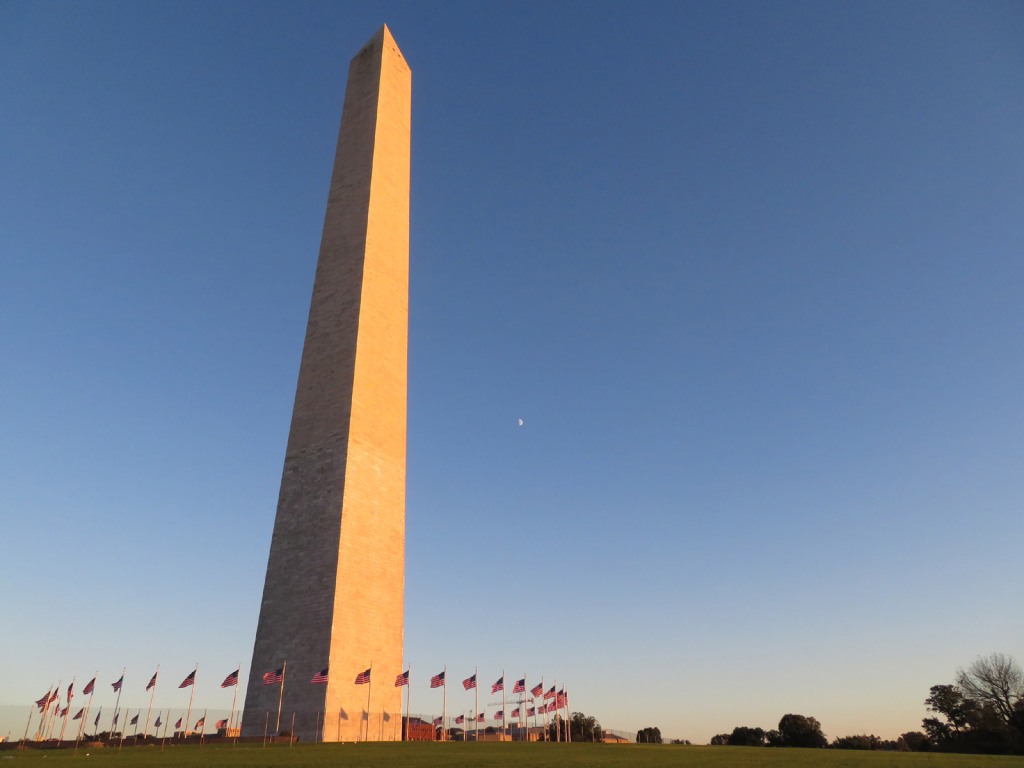
Egyptian-style obelisk the Washington Monument at sundown, surrounded by its circle of Stars and Stripes. The most prominent monument in town and built to commemorate its namesake, it is still the tallest masonry (brick) structure in the world, and tallest structure of any kind from its completion in 1884 until overtaken by the Eiffel Tower in Paris just five years later.
The Lincoln Memorial, outwardly a relatively simple neo-classical temple surrounded by Doric columns, completed in 1922 it sits at the west end of the National Mall.
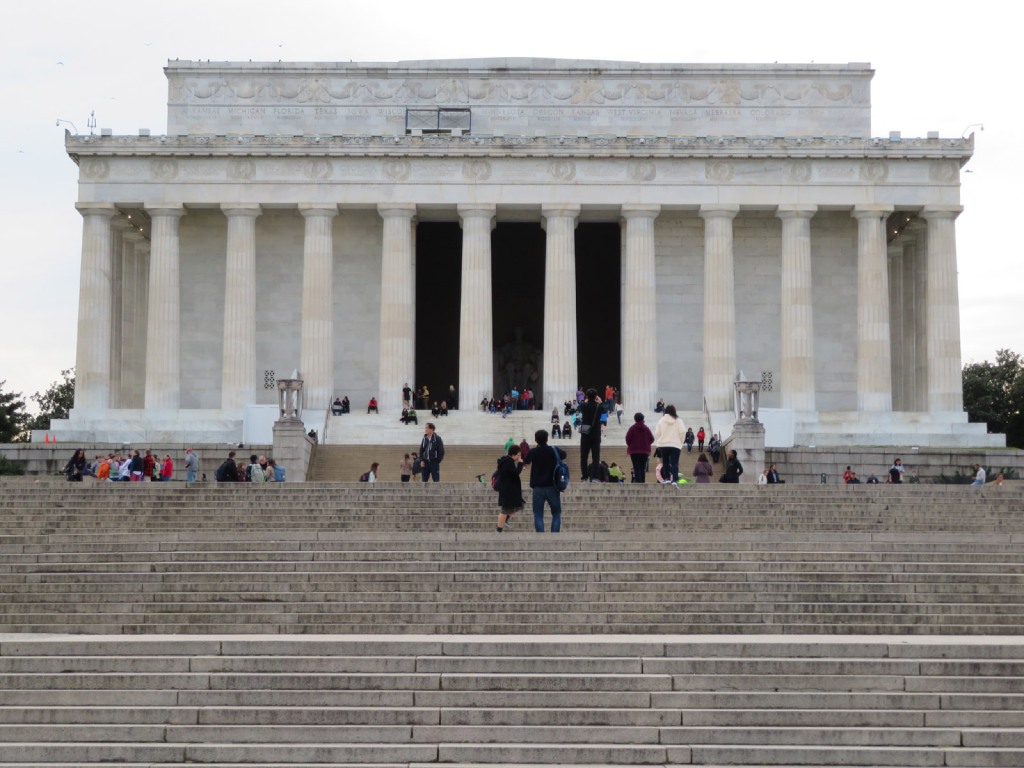
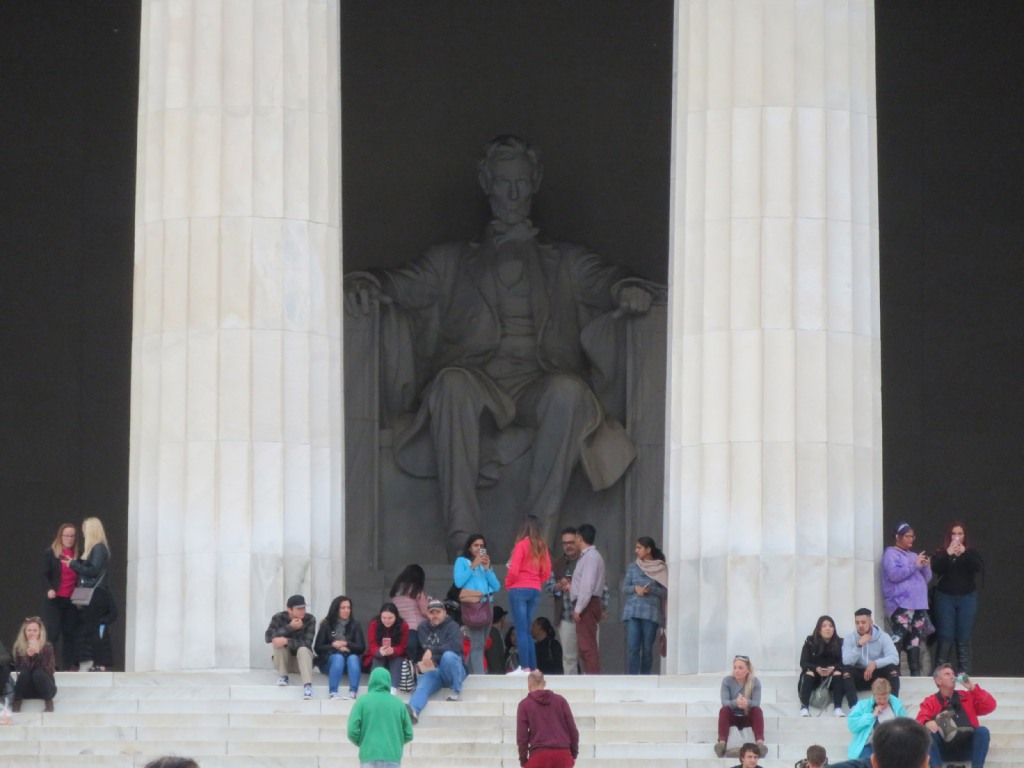
Lincoln himself is immortalised in marble within, and appears as a giant looming form from this angle with zoom lens trickery.
The statue is indeed large but takes on a more human scale once within the memorial. Two of his most famous speeches are carved into the walls including the Gettysburg Address, and there is speculation that his hand positions are deliberate sign language for “A” and “L”.

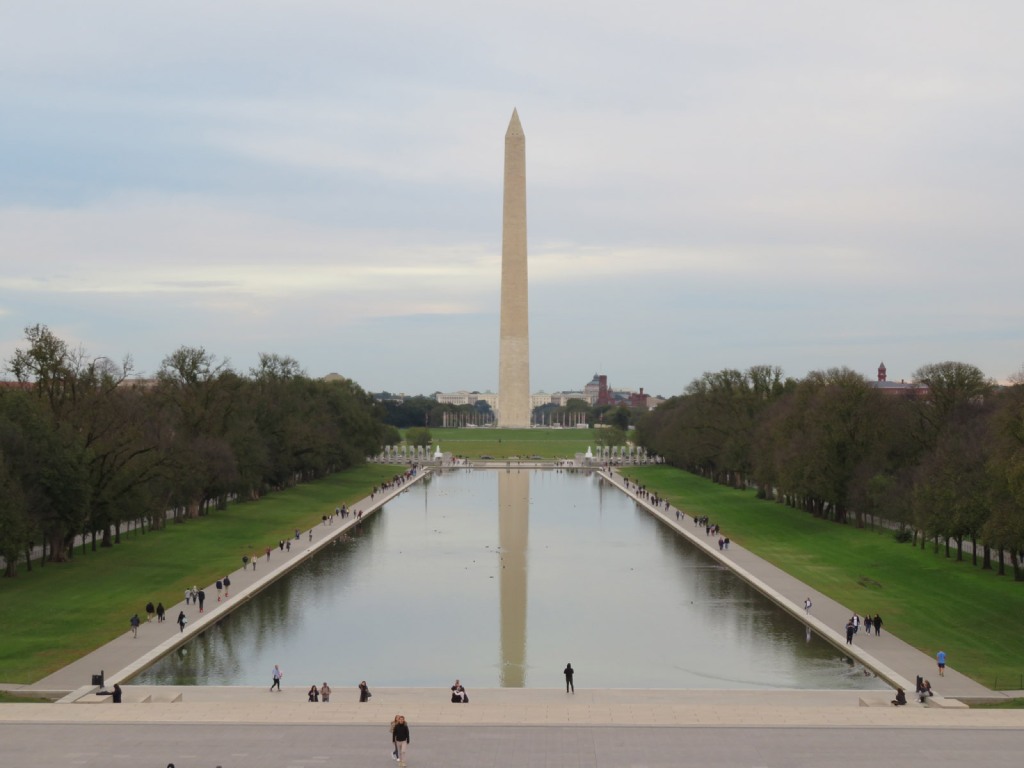
View back up the reflecting pool from the Lincoln Memorial to the Washington Monument, itself obscuring the dome of the Capitol Building. It was on this spot that Martin Luther King Jr. delivered his “I Have A Dream” speech in 1963.
The National World War II Memorial is at the opposite end of the reflecting pool from the Lincoln Memorial. This half commemorates the Pacific operation and losses, with a column for each US state and territory, and a triumphal arch.

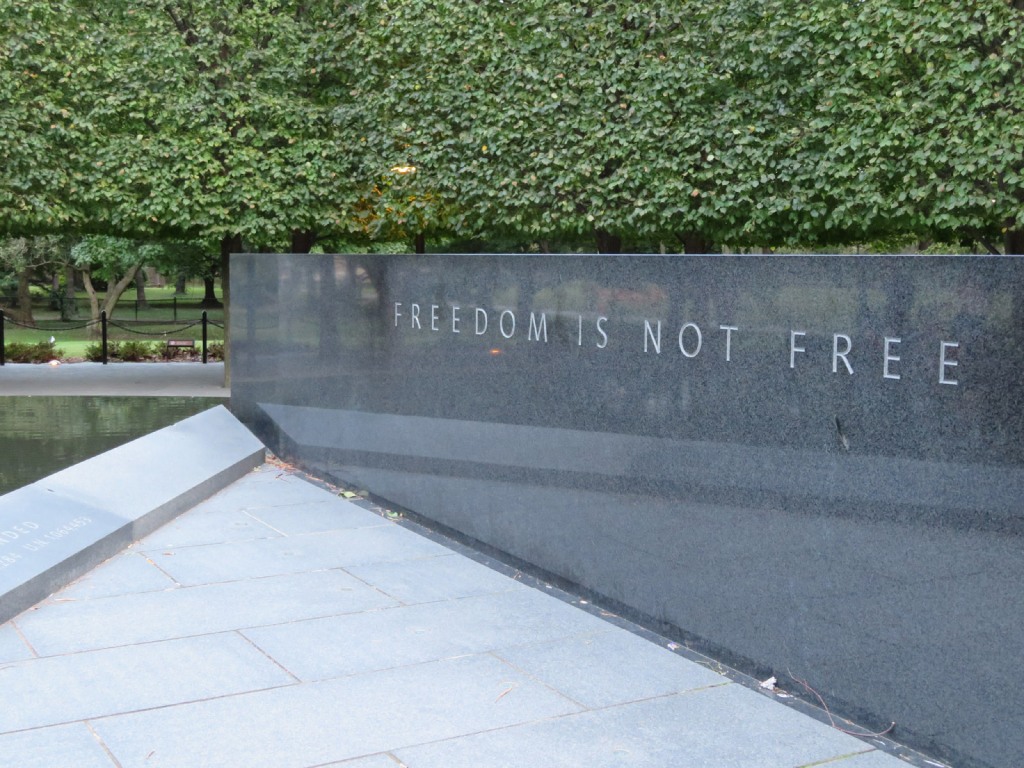
A stark reminder of the price of freedom at the Korean War Veterans Memorial.
Detail of the poncho-clad soldiers in the Korean War Veterans Memorial, known as The Column. A more recent addition to the National Mall, it was dedicated in 1995, over 40 years after the war ended in 1953.


Martin Luther King Jr. is memorialised in light pink granite, not far from the Washington Monument. The memorial represents him emerging from the stone of hope, itself separate from a larger granite carved mountain of despair behind. It was dedicated in 2011.
As we walked around the Tidal Basin we next encountered the Franklin Delano Roosevelt Memorial, commemorating the President who led the country through the twin perils of the Great Depression and the Second World War. He was the last President to sit for three terms, from 1933-1945, and is memorialised in bronze with his dog Fala.


It is hard to overstate the impact that the Great Depression had on the United States, represented at the FDR Memorial by five impoverished figures waiting in a bread line. There is much wisdom to be read in the inscriptions throughout the memorial.
The sun had set by the time we approached the Jefferson Memorial, commemorating Thomas Jefferson, third president and author of the Declaration of Independence from the British. Its design was inspired by the Pantheon in Rome, even down to the rings around the roof dome.


Besides being instrumental in the American Revolution, Jefferson was a forward thinker of his day particularly regarding individual rights and freedoms. Quotes from several of his speeches are carved in the walls, including (to paraphrase) that all men are created equal, and endowed with the inalienable rights of life, liberty and the pursuit of happiness.
The world-famous German/Swiss/American physicist Albert Einstein is also memorialised just off the National Mall, since 1979. The papers he holds represent his three most important contributions to the world of physics, including his mass-energy equation E = mc2.
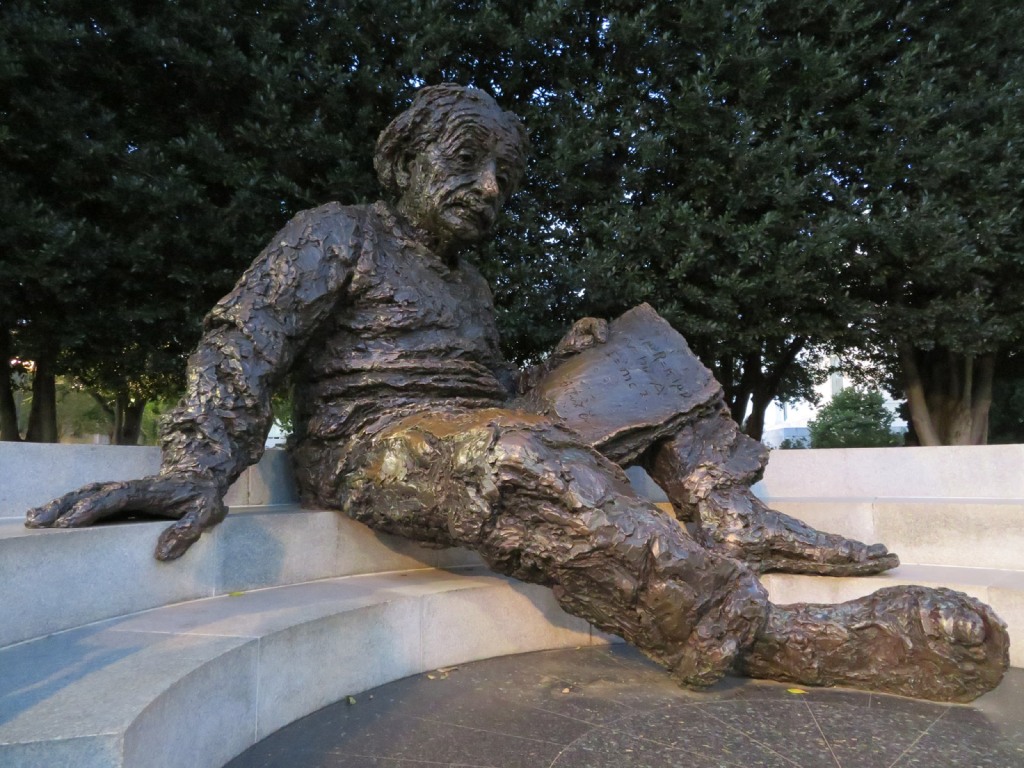

The Smithsonian Institution includes 19 museums plus many other educational and research facilities, and is still headquartered here at The Castle, built in 1847 on the National Mall.
The National Museum of Natural History is a world-class establishment on a scale as grand as London’s similar endeavour. At the time unfortunately the dinosaur section was being refurbished, but this enormous elephant makes for a spectacular shot nonetheless.


The Air and Space Museum has an additional branch for its larger exhibits out by Washington Dulles Airport, in the form of the Steven F. Udvar-Hazy Center. Possibly my favourite plane, the SR-71 Blackbird first flew in 1964 and remains the fastest jet ever produced, this one still featuring the Skunk Works logo on the tail.

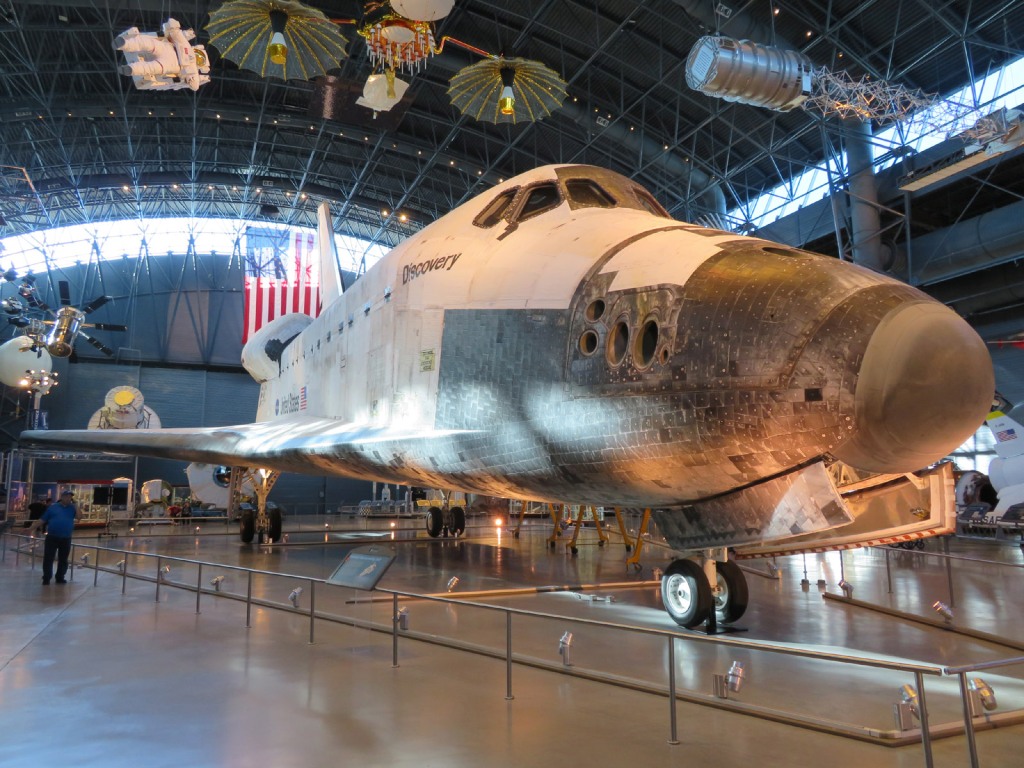
But undoubtedly the star of the museum’s who’s who of flight is the Space Shuttle Discovery, still worn and tarnished from its last re-entry in 2011. Discovery launched more times than any other shuttle and spent longer in space at just over a full year. It was difficult to photograph the whole orbiter and convey the scale (huge), but Discovery is definitely the coolest things I’ve ever seen in a museum.
Created 2023
